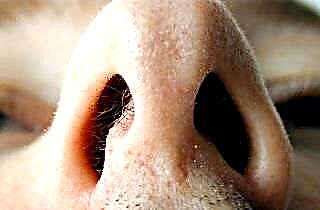Otitis externa is an inflammatory process that occurs in the auricle, eardrum and ear canal. The causative agents of pathological changes in the outer ear are fungal and bacterial microorganisms, whose metabolites provoke inflammation and tissue edema. The provocateurs of catarrhal processes can be microtrauma of the outer ear, a decrease in the reactivity of the immune system and general infections. With the progression of the disease, there is hyperemia of the affected skin and exudation from the ear canal.
Etiology

The key reason for the development of external otitis media is an infection that occurs due to the multiplication in the ear canal of Pseudomonas aeruginosa, staphylococci, pneumococci, aspergillus and other microorganisms. Small abrasions, ulcers and scratches in the auricle can provoke their penetration into the tissues. Favorable conditions for the reproduction of opportunistic microorganisms appear when the acidic medium is washed out from the ear, which is possible when water flows into the ear canal.
Factors contributing to the onset of infection include:
- regular cleaning of the ears with cotton swabs;
- insufficient production of sulfur by the ear glands;
- chronic infectious diseases;
- endocrine disorders;
- immune defects and hypothermia;
- long-term use of antibiotics;
- hypovitaminosis and allergic reactions.
The main symptom of the development of otitis externa is pain arising from palpation of the auricle and tragus, as well as narrowing of the ear canal, provoked by tissue edema.
The severity of symptoms largely depends on the type of pathology, which can occur in an acute or sluggish form.
Timely treatment of ENT disease prevents the spread of foci of inflammation and damage to the main parts of the middle and inner ear.
Clinical picture
Otitis media symptoms of the external ear are not limited to reddening of the skin in the ear canal and its slit narrowing. In about 45% of cases, the signs of the disease are poorly expressed, so patients are in no hurry to seek help from an otolaryngologist. This contributes to the spread of infection and damage to healthy tissues of the middle ear, as a result of which complications arise, such as choleostomy, mastoiditis, perforation of the tympanic membrane, etc.
narrowing. In about 45% of cases, the signs of the disease are poorly expressed, so patients are in no hurry to seek help from an otolaryngologist. This contributes to the spread of infection and damage to healthy tissues of the middle ear, as a result of which complications arise, such as choleostomy, mastoiditis, perforation of the tympanic membrane, etc.
In the case of the development of acute external otitis media, the symptoms of the manifestation of the disease will be:
- itching and irritation of the skin;
- throbbing pain;
- swelling of the ear canal;
- feeling of congestion;
- serous discharge;
- hearing impairment;
- hyperthermia;
- swelling of the parotid lymph nodes.
If the inflammation is provoked by microbes, a furuncle may form in the ear canal. The occurrence of a purulent-necrotic lesion of the hair follicle is evidenced by pain that appears during palpation of the auricle.
Symptoms of chronic otitis externa are poorly expressed, therefore, inflammatory processes in the tissues can proceed for several years. As a rule, the disease occurs due to inadequate treatment of acute otitis media. With the development of pathology, the following clinical manifestations are observed:
- itching in the ear canal;
- discomfort in the ear;
- thickening of the skin in the outer ear;
- leakage of exudate from the ear;
- lack of sulfuric discharge.
Due to tissue compaction and edema, stenosis may develop, i.e. blockage of the auditory canal, as a result of which serous fluid begins to accumulate in the ear cavity.
Types of otitis media
In otolaryngology, acute and chronic otitis media of the external ear are conventionally divided into two types. The type of pathology is determined by the prevalence of inflammatory processes and concomitant symptoms. This division allows you to determine the optimal course of treatment, which allows you to stop catarrhal processes in the auricle:
- diffuse otitis media - generalized inflammation of the ear tragus, ear canal, auricle and tympanic membrane. The key reason for the development of the disease is erysipelas, which is provoked by streptococci. In addition, the pathology can be caused by a fungal infection or allergy. With the progression of pathological processes in the ear, a bubble rash appears, provoking itching;
- limited otitis media - an inflammatory process in the hair follicle, which leads to the formation of a boil. An abscess does not always appear in a conspicuous place, however, its presence is signaled by pains appearing in the process of chewing food, palpation of the auricle and sneezing. Within 4-5 days, the symptoms of external ear inflammation subside, which is caused by the evacuation of pus from the follicle.
In the event of a partial or complete blockage of the external auditory canal, pus flowing from the boil can enter the middle ear. The bacteria in the purulent exudate can provoke inflammation of the mucous membrane of the tympanic cavity, which is fraught with the development of otitis media.
Drug therapy
For the treatment of acute otitis externa, mainly topical preparations are used. To stop swelling, itching and inflammation in the ear canal, you can use glucocorticosteroids, analgesics and antiallergic drugs. To eliminate the very cause of the inflammation, i.e. microbes or fungus, antimycotic and antimicrobial drugs are used.
The scheme of local therapy for acute otitis externa includes the following types of medications:
- antibacterial drops (Normax, Polidexa) - inhibit the development of pathogenic bacteria by inhibiting the synthesis of the cell membrane of pathogens;
- antiseptic solutions ("Chlorhexidine", "Miramistin") - disinfect the foci of inflammation, as a result of which the process of epithelialization of the affected tissues is accelerated;
- glucocorticosteroid ointments ("Akriderm", "Triderm") - relieve inflammation and edema, thereby normalizing the drainage and ventilation functions of the auditory canal;
- antifungal ointments (Miconazole, Clotrimazole) - kill fungal microorganisms, whose metabolites provoke inflammatory processes in the external auditory canal;
- NSAIDs ("Ibuklin", "Nise") - stop catarrhal inflammation and eliminate pain, which leads to relief of symptoms of ENT pathology;
- antihistamines ("Cetirizine", "Telfast") - inhibit the synthesis of inflammatory mediators, which helps to eliminate hyperemia and edema in the ear canal;
- alkaline drops ("Burov's Liquid", "Furotalgin") - increase the level of acidity in the outer ear, thereby increasing the reactivity of local immunity;
- analgesics ("Ketanov", "Ibuprofen") - relieve throbbing or aching pain, which prevents its irradiation into the ear.
The choice of specific types of drugs for the treatment of the disease should be carried out by the ENT doctor. In many respects, it depends on the etiological factors that provoked the development of otitis externa.
Physiotherapy procedures
Physiotherapy procedures in the treatment of external ear inflammation are recommended to be combined with drug therapy. The combined approach allows you to quickly achieve the desired therapeutic results and prevent the spread of inflammation to the inner ear. To stop catarrhal processes and improve tissue trophism, the following methods of physiotherapeutic treatment can be used:
- UHF therapy - a procedure based on the use of high frequency currents, which improve blood circulation in tissues and promote their regeneration;
- UV therapy - an effect on the foci of inflammation with ultraviolet radiation, which has an antibacterial and anti-inflammatory effect;
- autohemotherapy - treatment of inflammatory processes with the patient's blood, which is injected subcutaneously. Contributes to the relief of symptoms of diffuse otitis media and furunculosis.
Warming treatments can be used to relieve the symptoms of otitis media. However, their use is strictly prohibited in the presence of purulent exudate in the ear canal.
Warming up the foci of inflammation, in which bacteria are present, stimulates their reproduction, which is fraught with serious complications.



